For your Mercedes-Benz E 250 CDI Cabriolet, essential driving involves understanding its efficient diesel power, sophisticated comfort features, and the unique joys of open-top motoring. This guide simplifies its key aspects for a smooth, confident, and enjoyable ownership experience, focusing on practical driving and maintenance.
Welcome to the exciting world of the Mercedes-Benz E 250 CDI Cabriolet! If you’re new to this particular model, or perhaps even to the Mercedes-Benz family, you might be wondering about the best ways to get the most out of this luxurious German convertible. It’s a car that beautifully blends dynamic performance with refined comfort, offering a top-down driving experience like no other. But with any sophisticated vehicle, there are a few essentials to know for smooth sailing. Don’t worry, it’s not as complicated as it might seem! We’ll break down everything you need to know to drive, maintain, and truly enjoy your E 250 CDI Cabriolet with confidence.
Understanding Your Mercedes-Benz E 250 CDI Cabriolet
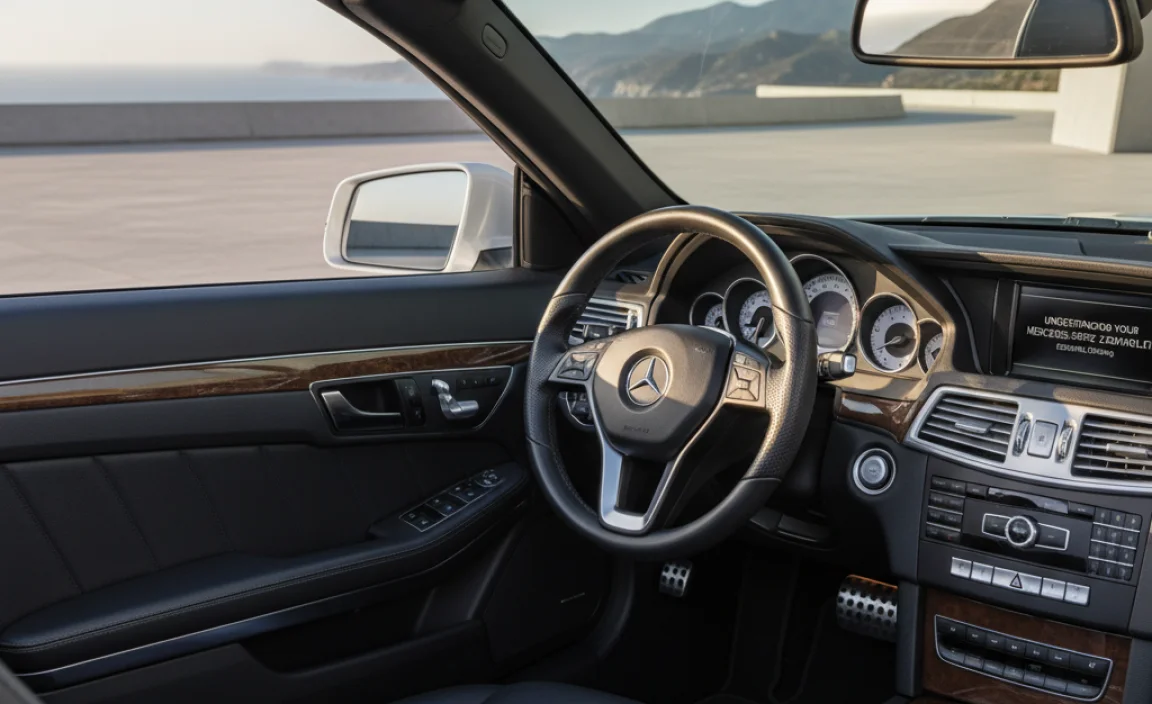
The Mercedes-Benz E 250 CDI Cabriolet is a superb example of German engineering, offering a compelling mix of performance, efficiency, and luxury. The “CDI” designation tells us this model is powered by a turbocharged diesel engine, known for its torque and fuel economy. The “Cabriolet” signifies its retractable hardtop or soft-top roof, providing the freedom of open-air driving.
The CDI Diesel Engine: Power Meets Efficiency
Your E 250 CDI is equipped with a diesel engine that offers a fantastic balance. Diesel engines are famous for their fuel efficiency, especially on longer journeys, and they deliver strong pulling power (torque) from low revs. This means you’ll find the car responsive and effortless to drive, whether you’re accelerating from a standstill or cruising on the highway. The CDI (Common Rail Direct Injection) system is a hallmark of Mercedes-Benz diesel technology, ensuring clean and efficient combustion.
Key Benefits of the CDI Engine:
- Excellent Fuel Economy: Significantly better mileage than comparable petrol engines, saving you money on fuel.
- Strong Torque: Provides ample pulling power for smooth acceleration and effortless overtaking.
- Long-Term Durability: Diesel engines are often built to withstand high mileage.
- Reduced CO2 Emissions: Modern diesels are much cleaner than older generations, contributing to environmental friendliness. For more on emissions standards, you can visit the U.S. Environmental Protection Agency’s page on clean diesel vehicles.
The Cabriolet Experience: More Than Just a Roof
The convertible aspect of your E 250 CDI Cabriolet is one of its most defining features. The operation of the roof is typically automated and can usually be done at low speeds, allowing you to adapt to changing weather or moods seamlessly. Enjoying the open sky adds a new dimension to every drive, making even short trips feel like an occasion.
Operating the Roof: A Simple Process
Operating the roof is designed to be user-friendly. You’ll typically find a button or control within easy reach, often on the center console or by the driver’s door. Consult your owner’s manual for the exact location and procedure, but generally:
- Ensure the vehicle is stationary or moving at a very low speed (check your manual for the maximum speed limit).
- Unlatch any manual locks if required (most modern convertibles don’t have these).
- Press or hold down the roof control button.
- Wait for the roof to fully retract or deploy.
Remember to be mindful of your surroundings when operating the roof, ensuring there are no obstructions.
Essential Maintenance for Your E 250 CDI Cabriolet
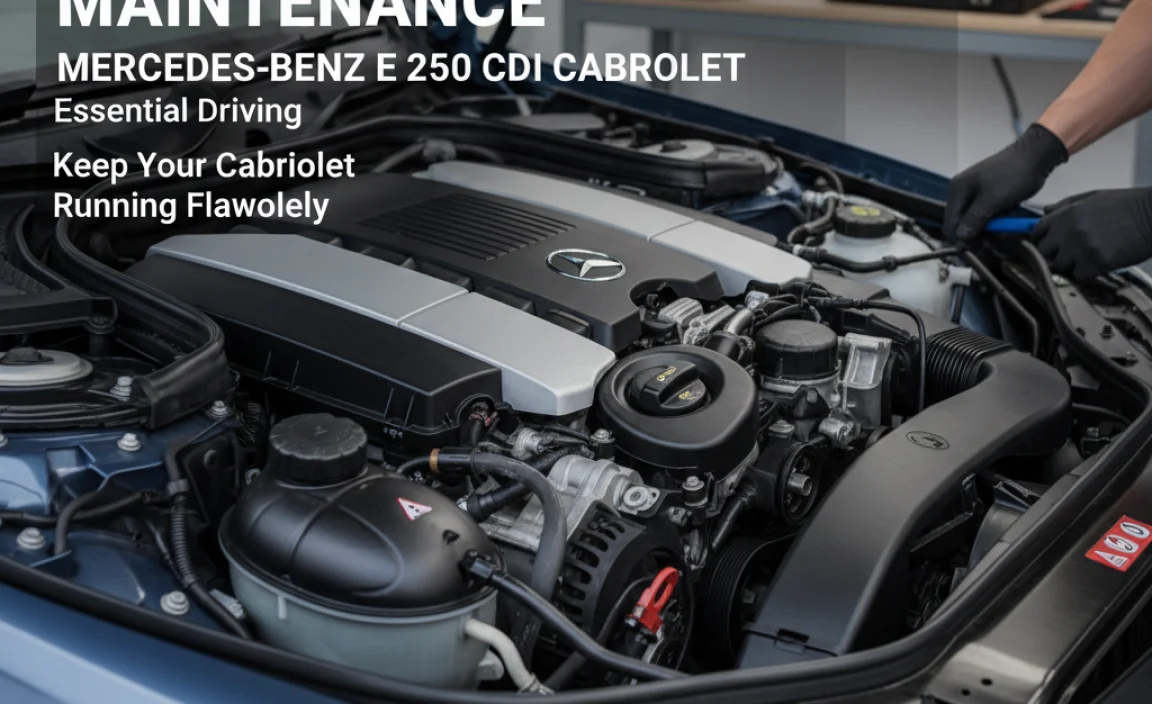
Keeping your Mercedes-Benz in top condition ensures it performs beautifully and reliably for years to come. Regular maintenance is key, and for a diesel convertible, a few specific areas deserve attention.
Regular Servicing Schedule
Following Mercedes-Benz’s recommended service intervals is crucial. This typically involves:
- Oil and Filter Changes: Essential for engine health. Diesel engines can sometimes benefit from specific diesel-specific oil.
- Fluid Checks: Coolant, brake fluid, power steering fluid, and windshield washer fluid levels should be checked and topped up as needed.
- Filter Replacements: Air filters, fuel filters (especially important for diesel engines), and cabin filters all need regular replacement. A clogged fuel filter can significantly impact diesel engine performance. Visit This Freight Transport Association article for more on the importance of diesel fuel filters.
- Brake System Inspection: Check brake pads, discs, and fluid.
- Tyre Checks: Look for wear, proper inflation, and wheel alignment.
Your car’s onboard computer often keeps track of upcoming service needs (often indicated by “Assyst” messages). Always refer to your owner’s manual for the specific service schedule tailored to your E 250 CDI Cabriolet.
Diesel-Specific Care
Diesel engines require a bit of specific attention:
Fuel Quality and Additives
Using high-quality diesel fuel from reputable stations is important. Occasionally, a diesel fuel system cleaner additive can help keep injectors clean and prevent buildup. These are readily available at auto parts stores.
Glow Plugs
Your diesel engine relies on glow plugs to help start the engine in cold weather. If you notice longer cranking times or rough starting in the cold, your glow plugs might need checking.
Cabriolet Roof Care
The retractable roof mechanism requires its own set of care to keep it functioning smoothly and looking its best.
Cleaning and Lubrication
- Fabric Roofs (if applicable): Regularly clean with a specialized fabric cleaner and protect with a water-repellent treatment. Avoid harsh brushes.
- Mechanism Lubrication: The pivot points and seals of the roof mechanism should be lubricated periodically with a silicone-based lubricant. This prevents squeaks and ensures smooth operation. Check your owner’s manual for recommended lubricant types. Local Mercedes-Benz dealerships or reputable independent workshops can perform this service if you’re unsure.
- Seal Maintenance: Keeping the rubber seals around the roof and windows clean and conditioned (with a rubber protectant) prevents leaks and wind noise.
Driving Modes and Features
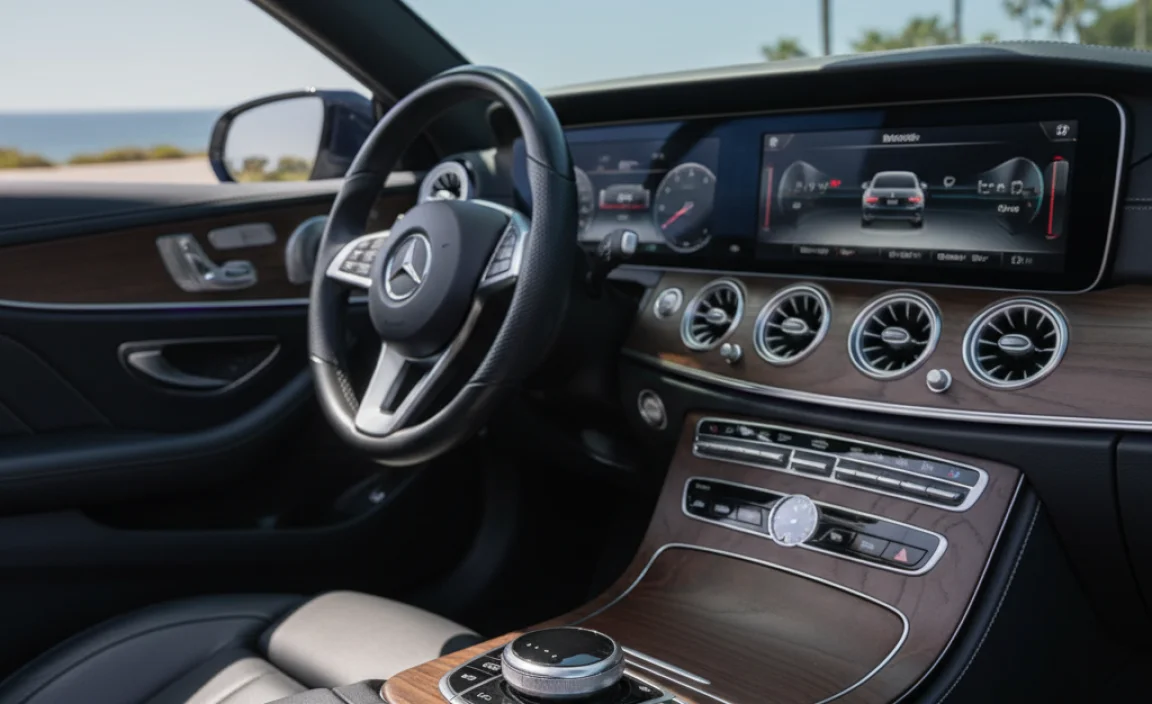
Your E 250 CDI Cabriolet likely comes with several driving modes and advanced features designed to enhance your driving experience and provide convenience.
Agility Select / Dynamic Select
Many Mercedes-Benz models feature a drive mode selector (often called Dynamic Select or Agility Select). This allows you to alter the car’s performance characteristics:
- Eco: Optimizes throttle response and transmission shift points for maximum fuel efficiency.
- Comfort: Provides a smooth, relaxed ride ideal for everyday driving and cruising.
- Sport: Sharpens throttle response, holds gears longer, and makes steering heavier for a more engaging drive.
- Sport+: (If available) Offers even more aggressive settings for spirited driving.
- Individual: Allows you to customize settings for powertrain, steering, and suspension to your preference.
Experiment with these modes to find what suits your driving situation best.
AIRCAP and AIRSCARF (If Equipped)
These are two brilliant features designed to make top-down driving comfortable even in cooler weather:
- AIRCAP: This system consists of an extendable wind deflector at the top of the windscreen frame and fixed wind deflectors behind the rear seats. When activated, AIRCAP significantly reduces wind buffeting inside the cabin, allowing for conversation and a more serene open-air experience at higher speeds than without it.
- AIRSCARF: This feature blows warm air from vents integrated into the headrests of the front seats, creating a ‘scarf’ of warm air around your neck. It’s incredibly effective at extending the convertible season, making it enjoyable to drive top-down on cooler days.
You’ll typically find buttons on the dashboard or center console to control these features. Consult your owner’s manual to locate them and learn their specific operation.
Troubleshooting Common Issues (Beginner Friendly)
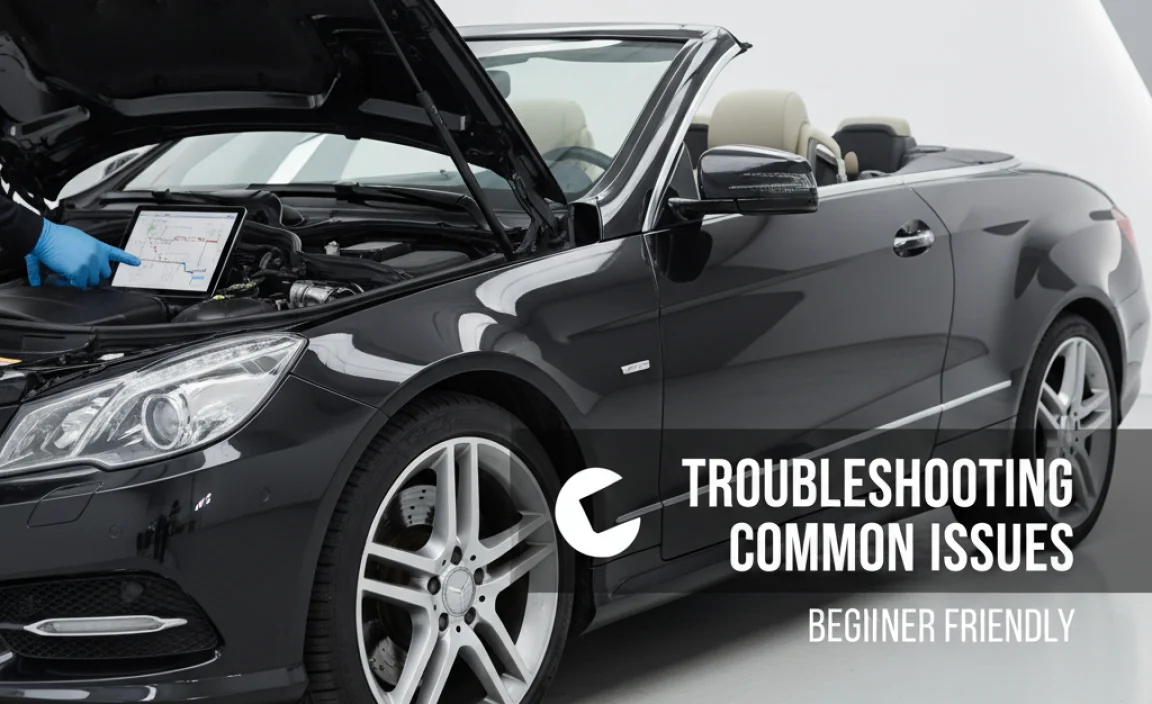
Even with meticulous care, small issues can arise. Here are a few common ones and how a beginner might approach them.
1. Why is My Engine Warning Light On?
This is a common concern. The check engine light can illuminate for many reasons, mild to significant.
Check the basics: Ensure your fuel cap is screwed on tightly. A loose cap can sometimes trigger this light.
Professional diagnosis: For most other causes, a diagnostic scan is needed. Most independent Mercedes-Benz specialists or dealerships have the advanced tools (like the Mercedes-Benz STAR diagnostic system) required to pinpoint the exact fault code. Trying to guess the issue without a scan can lead to more expensive repairs. You can find independent specialists by searching online for “Mercedes-Benz specialist near me.”
2. My Convertible Roof Is Slow or Stuck
This can be caused by low hydraulic fluid, a micro-switch issue, or simply a need for lubrication.
Check fluid: Consult your owner’s manual to locate the hydraulic fluid reservoir for the roof system and check its level. If it’s low, it might need topping up with the correct type of fluid.
Clean and Lubricate: As mentioned earlier, dirt or lack of lubrication in the roof’s tracks and hinges can cause it to bind. Gently clean the tracks and apply silicone lubricant.
Patience: Sometimes, the system just needs a moment. Try closing the roof, then immediately opening it again.
Seek Professional Help: If these steps don’t resolve the issue, it’s best to consult a specialist workshop that understands convertible roof systems, as hydraulic systems can be complex.
3. Strange Smells from the Engine Bay
Diesel engines can sometimes produce unique smells.
- Burning Oil Smell: Could indicate a leak onto hot engine components. Check for obvious leaks around gaskets or seals.
- Sulfur Smell (Rotten Eggs): This often points to an issue with the catalytic converter or potentially issues with the diesel particulate filter (DPF) regeneration cycle.
- Fuel Smell: This requires immediate attention. It could indicate a fuel leak, which is a safety hazard. Do not drive the car and have it inspected by a professional immediately.
Any persistent strange smells should be investigated. A visual inspection for obvious leaks or damage is a good first step.
4. My Car’s Performance Feels Sluggish
For a diesel, this often points to airflow or fuel issues.
- Air Filter: A dirty air filter restricts airflow to the engine, reducing power. This is an easy DIY replacement. You’ll typically find the airbox under a plastic cover in the engine bay. Check your manual for the exact location.
- Fuel Filter: A clogged diesel fuel filter is a frequent culprit for poor performance. These are usually more involved to replace than air filters, but a key maintenance item.
- DPF Regeneration: If your car predominantly does short journeys, the diesel particulate filter may not get hot enough to burn off trapped soot. Occasionally driving at higher speeds (e.g., on a motorway for 20-30 minutes) can help the DPF regenerate. If the warning light for the DPF comes on, follow the instructions for regeneration (usually found in your owner’s manual).
Essential Tools for the DIY Owner
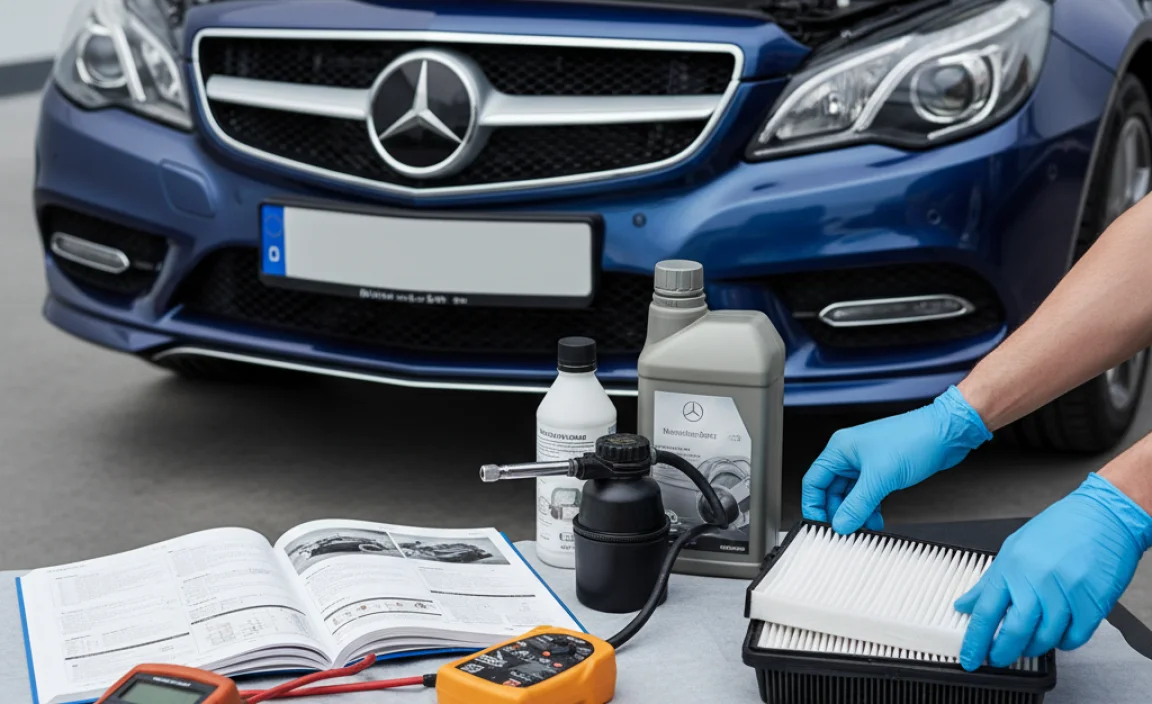
While many tasks are best left to professionals, having a few basic tools can empower you to tackle simple maintenance and checks.
Recommended Basic Tool Kit:
- Socket Set: Including metric sizes.
- Wrenches: Combination wrenches in common metric sizes.
- Screwdrivers: Phillips and flathead in various sizes.
- Torque Wrench: Essential for many Mercedes-Benz components to ensure proper tightening and prevent damage.
- Jack and Jack Stands: For safely lifting the vehicle. Always use jack stands! Never work under a car supported only by a jack.
- Gloves and Safety Glasses: For protection.
- Basic Diagnostic Code Reader: A simple OBD-II scanner can provide fault codes for the engine light, giving you a starting point for diagnosis.
Specialty Tools (Optional but Helpful):
- Trim Removal Tools: For safely removing interior or exterior trim pieces.
- Fluid Transfer Pump: Useful for topping up or changing fluids.
- Battery Terminal Cleaner: To ensure good electrical contact.
Always ensure you are using the correct tools for the job. For specific tasks like climate control system checks or deep engine diagnostics, specialized Mercedes-Benz equipment is required.
Fueling and Best Practices
Making smart choices at the pump and in your daily driving habits will keep your E 250 CDI Cabriolet running efficiently and cleanly.
Diesel Fueling Etiquette
- Use the Correct Fuel: Always use diesel fuel. Putting the wrong fuel in can cause significant engine damage.
- AdBlue (Diesel Exhaust Fluid – DEF): Many modern diesel vehicles, including Mercedes-Benz, use AdBlue to reduce emissions. Your car will have a separate tank for this. A warning light will appear when the AdBlue level is low, and it’s crucial to top it up as per the manufacturer’s guidance. Running out of AdBlue can prevent the car from starting. You can find more about AdBlue from resources like the UK government’s guidance.
- Winter Diesel: In very cold climates, fuel stations offer winterized diesel fuel to prevent waxing (clogging of fuel filters).
Driving for Efficiency
- Smooth Acceleration: Avoid sudden, harsh acceleration.
- Anticipate Traffic: Look ahead and ease off the accelerator early when you see a red light or traffic slowdown, rather than braking hard.
- Maintain Tire Pressure: Properly inflated tires reduce rolling resistance.
- Reduce Unnecessary Weight: The lighter your car, the less fuel it uses.
- Use Cruise Control: On highways, cruise control can help maintain a steady speed, which is more fuel-efficient.
- Mindful Top-Down Driving: While enjoying the open air, remember that driving with the top down and windows open can increase aerodynamic drag, slightly reducing fuel efficiency.
Table: E 250 CDI Cabriolet Common Dashboard Warning Lights
Understanding what these lights mean can help you react appropriately.
| Warning Light Symbol | Meaning | Action Required |
|---|---|---|
| Engine Malfunction | Check manual. May require immediate professional inspection or conscious driving. | |
| Low Engine Oil Pressure / Level | Stop immediately. Check oil level. If low, add oil. If level is adequate, do not drive and seek professional help. | |
| Brake System Warning | Check parking brake. If released, check brake fluid level and system. Seek professional inspection immediately. | |
| Battery Charging System Fault | Issue with alternator or battery. Drive cautiously to a garage; avoid prolonged use of electronics. | |
| Tire Pressure Monitoring System (TPMS) Fault | Tire pressure is low in one or more tires. Check and adjust tire pressures. If light remains, |